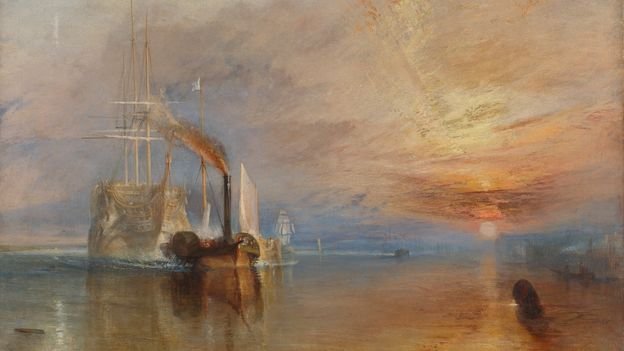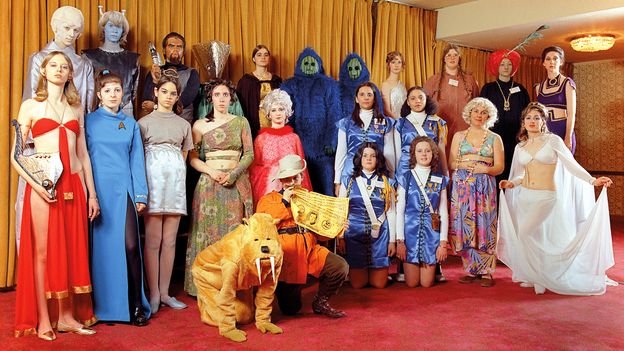
Eight photos of the quirkiest groups in 70s and 80s US
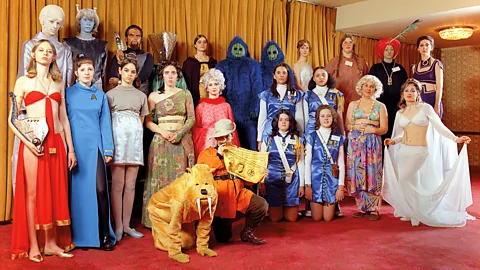 Neal Slavin
Neal SlavinCelebrating “the joy of being together “, here are eight group portraits – taken by photographer Neal Slavin between 1972 and 1991 – that show both togetherness and peculiarity in US life.
It’s 50 years since photographer Neal Slavin began travelling around the US documenting the nation’s diverse – and often bizarre – group gatherings. To mark the anniversary, a new edition of this body of work, When Two or More are Gathered Together, has just been published.
Slavin’s subjects, he writes, “affirm the joy of being together rather than being apart”, and reveal the many different ways that people find common ground. A broad sweep of society is depicted: bingo players, stockbrokers, chambermaids and gravediggers. Some groups, such as the Tall Social Club, invite normality into the marginal; others share passions, from penny farthing bicycles to bodybuilding.
Slavin likes his subjects to pose as they want to, allowing natural hierarchies and group dynamics to come to the fore. “I watch individuals who jockey for position, thrusting a shoulder in front of the next person or wearing the widest smile, while others recede into the background, who are posing only to be a part of something larger – the group,” he writes in the book.
When the first images were published in 1976, the book became a landmark work, indicating the potential of the new medium of colour photography. Now, with 54 additional photos, some taken as recently as 2023, Slavin’s celebration of togetherness in an increasingly individualistic digital age feels especially relevant. Here are eight highlights from the book.
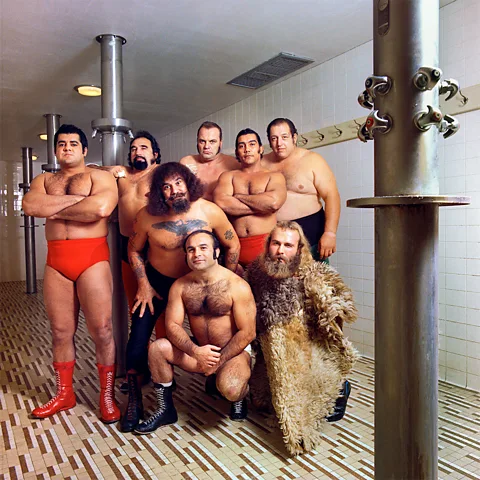 Neal Slavin
Neal SlavinCapitol Wrestling Corporation (1972-5)
The Capitol Wrestling Corporation photo shoot in Washington DC, chosen as the front cover of the book, had Slavin full of anticipation. “My father and I used to watch this kind of wrestling on Channel 11, so when it came time to find these guys, I was absolutely elated,” the Brooklyn-born photographer tells the BBC. He had hoped to shoot the men in action, but a scheduled event meant that they got “shunted over to the boys’ locker room”. Shaking hands with Gorilla Monsoon (top right) proved to be an event in itself. “His hand was bigger than my head,” Slavin jokes. But for all their brawn and hammed-up bravado, “the camaraderie between them was incredible,” he says. “They talked about everything, and I think that’s what made the picture.”
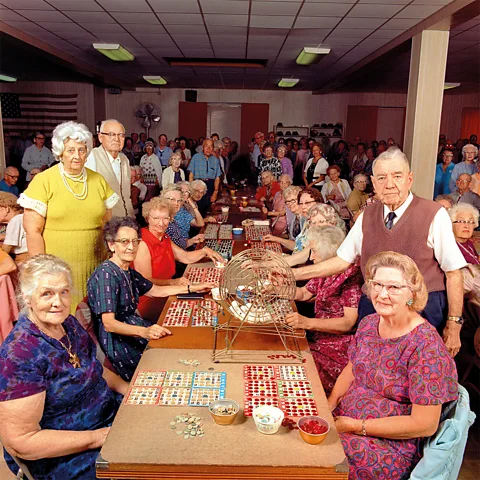 Neal Slavin
Neal SlavinBingo Club (1972-5)
“I love that picture,” says Slavin of his photo of a bingo club in St Petersburg, Florida. “For me it just reeks of straight-to-the-heart humanity. It’s not humorous: it’s human.” The players sit in the same seat every time they get together, yet they all crowd in to be in the picture. “They want to be marked down that they were there and at a certain time in history,” explains Slavin. “There’s a social fabric among all these people,” he adds, pointing out their varied responses to the camera. Some have their chests out, others are hunched over, and some are standing up to be seen. “That’s what I look for. When I’m at my best, I’ve found the narrative in the group, and it’s fascinating.”
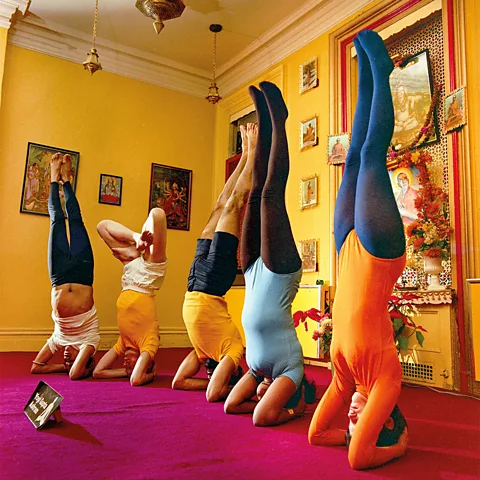 Neal Slavin
Neal SlavinYogis (1974)
Slavin asked these Los Angeles yogis to assume a number of positions before settling on this headstand. Here, the fruits of colour photography are clear, but it had taken some time for Slavin and others to topple a pervasive snobbery that favoured monochrome. “We broke the barrier,” he says. It was the additional information that colour supplied that most appealed to him. “That opened up an entire world for me that was absolutely amazing,” he says. Slavin – ever the outsider – was both bemused and fascinated by the yogis. He references the 19th-Century historian and sociologist Alexis de Tocqueville who observed that, in contrast to his home country of France, Americans instinctively form groups for almost every aspect of life, forging mini democracies. Slavin fears that the digital age threatens the physicality of these connections. “It’s interrupting that very basic tribalism that we have survived on for millennia, and I lament that,” he says.
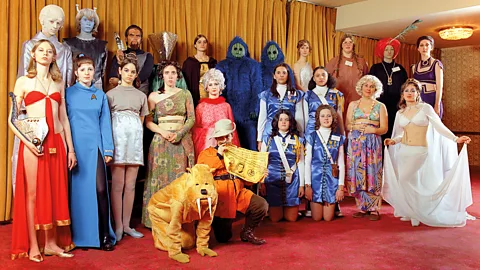 Neal Slavin
Neal SlavinThe Star Trek Convention (1972-5)
The Star Trek convention, in Brooklyn, New York, was a trickier affair. “I don’t think it has heart,” says Slavin, typically forthright. With the wrestlers, “the pulse is very obvious,” he maintains, but this group, which met annually to exchange memorabilia and keep the memory of the original series of Star Trek alive, was much harder to penetrate. “It was [just] people dressing up,” he shrugs. “They don’t really know each other. They didn’t come together and have the kind of energy that would have changed the dynamic. Their concern is purely looking at the camera and being some character that they weren’t.” He nevertheless considers the photograph a success. “It shows the sociological cracks,” he says. “They need to be together, but they’re together apart.”
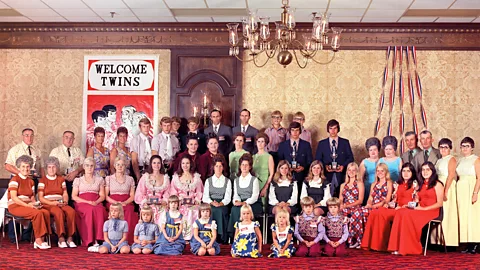 Neal Slavin
Neal SlavinInternational Twins Association (1972-5)
As far as Slavin knew, a twins picture on this scale had never been made before. “I wanted to do it very badly,” he says. This time, “we get a much more vibrant pulsing from the group,” he says, but it became a little overwhelming. In the centre, Levona and Lavelda, two Chicago models in pink dresses, clutch trophies for the most lookalike twins in their age category. Later, they invited Slavin to join them for dinner at a local cafe with their twin boyfriends, Larry and Jerry. “The whole room was filled with twins and they started talking in twin talk, finishing each other’s sentences,” Slavin remembers. “Finally, I had to excuse myself from dinner because it was beyond me to keep up with them.”
 Neal Slavin
Neal SlavinNew York Stock Exchange (1986)
Slavin’s other metier, film direction, served him well a decade later when he photographed an entire floor of stockbrokers at the New York Stock Exchange, described admiringly by photographer Joe McNally as “the toughest crowd in the world”. As a director, Slavin says, “if you can’t make friends with 1,000 people inside of 30 seconds, you’re dead in the water”. Group portraiture is “a misunderstood genre,” he opines, its lowly status, “a cross I have to bear”. Ambitious images such as this one, with its mirror-like symmetry, show its potential in the right hands. “It seems so innocuous and easy, but in fact, it’s a very difficult genre because you’re looking for something other than just a sea of faces,” he says. But if you get it right, “the reward is amazing”.
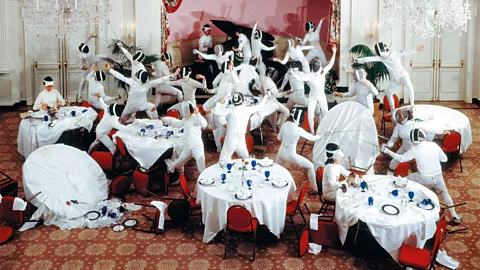 Neal Slavin
Neal SlavinThe DC Fencers Club (1988)
This approach is also clear in this strikingly cinematic image of fencers in Washington DC. It was commissioned by the Washington Post, but it was Slavin’s idea to go to the grand ballroom of the Ritz Carlton and stage this theatrical scene. It’s a strong example of his love of counterpoints, moving the eye from the pianist at the back to the diner eating bagels at the front on the right. “Fencing had all these things [such as chivalry] that are embedded in our culture expressed in these swords,” says Slavin. In this image, Slavin raises it to a new level. “The fencing picture,” he says, “was something that I dreamed of doing, a kind of tour de force, and I thought of directors like Kurosawa and Scorsese.”
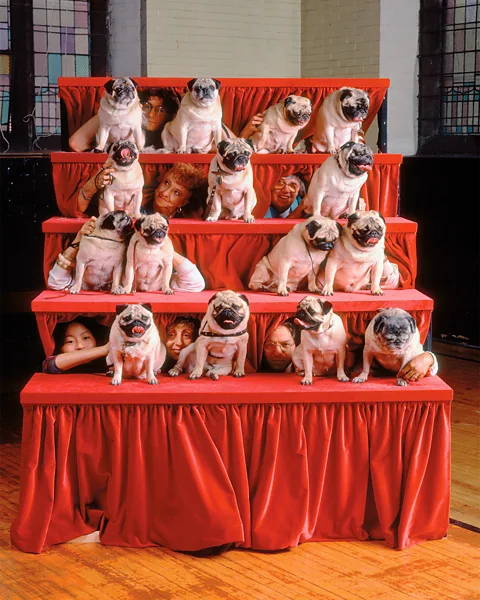 Neal Slavin
Neal SlavinPugs (1991)
Funnier still than this frozen image of 15 wrinkly-browed, panting pugs, were the moments leading up to it. The trainers were trying to hide behind the curtains, but frenzied hands and faces kept poking through in an attempt to help the pugs to pose. “The dogs were calmer than the people. The dogs were just great, but the people were frantic that they would be seen!” laughs Slavin. “I said, ‘You know what? This is crazy. Let’s open the curtain.'” The result is far better for Slavin’s intervention, with the owners’ peeping faces telling a mixed story of amusement, self-consciousness and pride in their pets. What all the photos have in common is “tribalism”, he says, which he sees as something positive. “The groups en masse have taught me an entire universe of possibilities. As humans, we are in groups. I don’t care if it’s a work group, a feminist group or a baseball league, whatever it is, you identify with others.”




